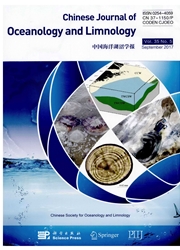

 中文摘要:
中文摘要:
大西洋大马哈鱼斑鳟属 salar 在四袜子 densitieshigh 密度 D 被饲养<候补选手class=“ a-plus-plus ”> 1 (最后的密度 39 kg/m <啜class=“ a-plus-plus ”> 3 ),媒介密度 D <候补选手class=“ a-plus-plus ”> 2 ( 29 kg/m <啜class=“ a-plus-plus ”> 3 )和 D <候补选手class=“ a-plus-plus ”> 3 ( 19 kg/m <啜class=“ a-plus-plus ”> 3 ),和低密度 D <候补选手class=“ a-plus-plus ”> 4 ( 12 kg/m <啜class=“ a-plus-plus > 3 )for 调查的 40 天他们的 growt 上的袜子密度的效果袜子密度显著地没以重量影响特定的生长率(SGR < 潜水艇 class= “ a-plus-plus ” > w ) 但是确实以精力影响了特定的生长率(SGR < 潜水艇 class= “ a-plus-plus ” > e ) 。袜子密度显著地影响了定量水平( RL <潜水艇class=“ a-plus-plus ”> w 和 RL <潜水艇class=“ a-plus-plus ”> e ),喂变换比率( FCR <潜水艇class=“ a-plus-plus ”> w 和 FCR <潜水艇class=“ a-plus-plus ”> e )并且明显消化的好坏率( ADR )。定量水平和 FCR < 潜水艇 class= “ a-plus-plus ” > w 趋于与增加增加密度。在最高的密度 D 的鱼 < 潜水艇 class= “ a-plus-plus ” > 1 和最低密度 D < 潜水艇 class= “ a-plus-plus ” > 4 显示出更低的 FCR < 潜水艇 class= “ a-plus-plus ” > e 和更高的 ADR 与比在中等密度。袜子密度显著地影响了身体的蛋白质和精力内容但是没影响它的潮湿,类脂化合物,或灰内容。为在低密度、高密度的组的新陈代谢的精力的开销在中等密度的组是比那低的。袜子密度从排汇物影响了精力利用,但是没在排泄率上有效果。到在高密度和低密度的生长的更大的精力分配可以被归因于减少的新陈代谢的率并且增加了明显的消化的好坏率。这些调查结果提供将在 Atlantic-salmon-farming 工业帮助合适的袜子密度的选择的信?
 英文摘要:
英文摘要:
Atlantic salmon Salmo salar were reared at four stocking densities--high density D1 (final density -39 kg/m^3), medium densities DE (-29 kg/m^3) and D3 (~19 kg/m^3), and low density D4 (-12 kg/m^3)- for 40 days to investigate the effect of stocking density on their growth performance, body composition and energy budgets. Stocking density did not significantly affect specific growth rate in terms of weight (SGRw) but did affect specific growth rate in terms of energy (SGRe). Stocking density significantly influenced the ration level (RLw and RLe), feed conversion ratio (FCRw and FCRe) and apparent digestibility rate (ADR). Ration level and FCRw tended to increase with increasing density. Fish at the highest density D~ and lowest density D4 showed lower FCRe and higher ADR than at medium densities. Stocking density significantly affected protein and energy contents of the body but did not affect its moisture, lipid, or ash contents. The expenditure of energy for metabolism in the low-density and high-density groups was lower than that in the medium-density groups. Stocking density affected energy utilization from the feces but had no effect on excretion rate. The greater energy allocation to growth at high density and low density may be attributed to reduced metabolic rate and increased apparent digestibility rate. These findings provide information that will assist selection of suitable stocking densities in the Atlantic-salmon-farming industry.
 同期刊论文项目
同期刊论文项目
 同项目期刊论文
同项目期刊论文
 期刊信息
期刊信息
